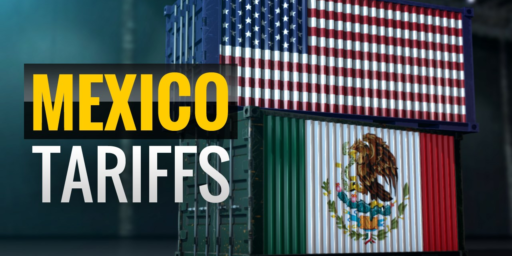Illegal Border Crossings Surge
Via the NYT: Number of Migrants Illegally Crossing Rio Grande Rises Sharply
The numbers of migrants crossing the Rio Grande illegally have risen sharply in recent weeks, replaying scenes from the influx of Central American children and families in South Texas last year.
[…]
The new flows here are smaller than the surge in the summer of 2014, but come after a year of declines in illegal crossings across the southwest border.
[…]
A mix of factors seems to be driving the new flow. Many of the migrants are women and children fleeing vicious gangs and endemic sexual violence in Central America who are hoping for asylum in the United States. Rather than hiding from Border Patrol agents they often try to find them, to ask for protection and start the long legal battle to remain here.
In October, the United Nations High Commissioner for refugees, António Guterres, said uncontrolled violence by the gangs had become “pervasive” in El Salvador, Guatemala and Honduras. He issued an “early warning” of “a looming refugee crisis.”
A report by his agency found that women in particular “face a startling degree of violence that has a devastating impact on their daily lives.” According to United Nations figures, this year El Salvador moved into first place in the world for the rate of murders of women and Guatemala ranked third, while Honduras had the highest murder rate over all.
It is important to understand that this flow of migrants is very much being driven by conditions in Central America (but I fear it will, instead, be cast by many as cause for xenophobia and/or paranoia over terrorism).
Another contextual issue of note (via the Pew Research Center): More Mexicans Leaving Than Coming to the U.S.
More Mexican immigrants have returned to Mexico from the U.S. than have migrated here since the end of the Great Recession, according to a new Pew Research Center analysis of newly available government data from both countries. The same data sources also show the overall flow of Mexican immigrants between the two countries is at its smallest since the 1990s, mostly due to a drop in the number of Mexican immigrants coming to the U.S.






They’re trying to get in before the Trump Wall, financed by the Mexican government.
@James Joyner: Of course!
@James Joyner: Or possibly lining up early for the construction jobs building that beautiful, strong wall.
Sounds like exactly the kind of people America needs: moral, lawful, and with the fortitude and discipline to undertake a difficult task and see it through.
Is it xenophobia when you cannot adequately employ, or finance a safety net for, your existent population?
@Guarneri: Is it xenophobia when you
cannotcreate policies designed to not adequately employ, or finance a safety net for, your existent population?FIFY
And by the way, aren’t the “inadequately employed” in that condition because they are too lazy to work? Please stay on script.
@Guarneri:
Since I think you are hostile to a safety net, I’m just not sure what you’re trying to say?
@Guarneri:
An interesting hypothetical. In such a situation, it might be hard to distinguish fiscal responsibility from xenophobia.
Fortunately, we live in a country where safety net programs are a tiny fraction of GDP, and people keep coming to the US illegally precisely because they continue to find paying jobs here.
It isn’t exactly xenophobia when we choose not to adequately employ, or finance a safety net for, the population — even though we easily could. It’s equally ugly, though.